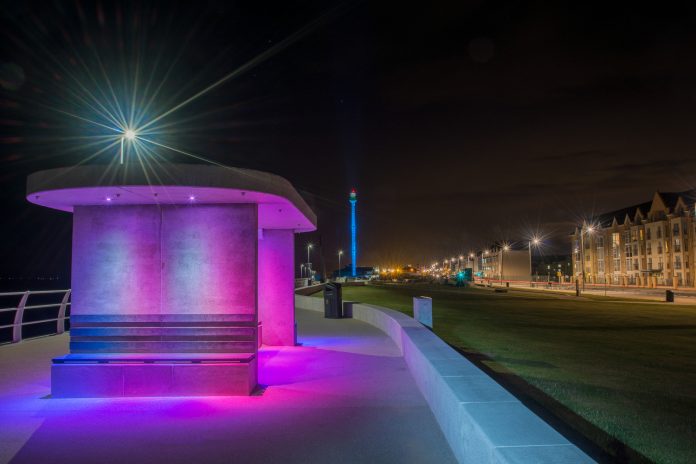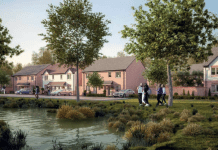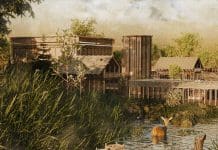Graham Boase of Denbighshire County Council discusses the authority’s efforts to regenerate Rhyl for a new generation of residents – and how the search for better work/life balance offers an outstanding opportunity for other seaside towns
Recent research for LoveRhyl revealed that over a quarter of British people are unsatisfied with the work/life balance opportunities in their current location and would prefer to live somewhere else.
As Britain’s labour force has moved from agricultural to industrial and now digital (offering greater freedom from being tied to an office location), people have the ability to live somewhere other than our cities and take advantage of opportunities for greater work/life balance. Between October 2016 and October 2017, almost 94,500 people moved out of cities to the countryside (the highest number since 2007), according to a Hamptons International study.
The shift presents an outstanding opportunity for the UK’s struggling coastal towns to refresh their offering and open their doors a new generation of residents. These towns have been affected by some well-publicised deep-rooted issues in the last few decades, but they are also able to call upon some envious legacy assets and credentials as they look to reinvent themselves. Britain’s seaside towns have real lifestyle assets at their fingertips, with many located in areas of outstanding natural beauty and boasting strong links to nearby employment hubs.
In order to attract the burgeoning market of city escapers, these towns must develop and implement a robust and fresh approach to urban planning. This needs to take advantage of the core assets that their existing communities are built upon, while allowing flexibility for innovative building projects to be delivered.
In the past, some local authorities have overlooked what is needed today. Instead, they have favoured the pursuit of regeneration strategies that attempt to recapture these towns’ former heydays, driven by a sense of nostalgia and desire to capture the spirit of a bygone period.
The overall success rate of these schemes has been low, with projects and facilities launched that simply haven’t delivered what the local community needs in the here and now. They have generally failed to set the communities up for a successful, sustainable future. The reality is that times change, and regeneration strategies must keep pace.
The long-term goal of seaside town regeneration strategies should be to invest, build and develop assets that contribute to a viable economy. This will increase the desirability of these towns as places that all generations will actively seek to live, work, invest and do business in as a genuine alternative to bigger cities.
Creating a fresh template for seaside towns to achieve this does not mean reinventing the wheel. The first step should be to identify the needs of the local population and the market trends that might attract new, long-term residents. In addition, the existing infrastructure assets that can be carried forward alongside new elements should be determined.
We are currently well underway with a major regeneration programme in Rhyl, North Wales, to create a sustainable commercial and residential market and year-round leisure facilities that serve both the local community and tourism markets. Central to this strategy is encouraging footfall into a repurposed central business district built on the strengths of local, independent enterprises.
In the West Rhyl area of the town, we have focused on developing a new, balanced housing market that blends multiple types of housing and tenure. This is helping to create a stable community with more economically active people living in the neighbourhood, as well as improving the appearance and perception of the area. We have carried this approach through to the refreshed services provision across the town, which includes two new state-of-the-art secondary schools to provide outstanding education opportunities for young families in the local area.
Like many seaside towns, Rhyl’s waterfront is one of its chief assets, but it required fresh investment and a cohesive strategy. The subsequent £33m regeneration project has been designed to add new attractions, consolidate existing ones and introduce missing commercial elements that are vital to the town’s long-term success. These elements are formed of five distinct ‘zones’ along the Rhyl coast, with each fulfilling a specific purpose, from providing cultural and hospitality facilities to family entertainment and leisure.
Cumulatively, the various projects along the promenade will significantly increase footfall into Rhyl town centre from visitors, but also from residents in Rhyl, Denbighshire and the wider North Wales area. The focused investment in new leisure sites is a key component of this strategy. We have recognised the benefits of these facilities to people’s health and wellbeing, and are meeting increasing demand from the community for exercise classes and up-to-date facilities.
The sites have also been purposefully developed to provide year-round amenities that serve both the local community and capture visitor interest. This is creating a sustainable basis for the local economy, with further new business and job opportunities increasing with further visitor numbers and spend along the coastal strip.
Clearly, the level of work and investment required means that seaside towns are not going to experience some form of metamorphosis overnight. The Rhyl regeneration project is the result of several years’ planning and intelligent action from local authorities, planners, developers and more. In many ways, as we begin to bring our new facilities online, much of the work to breathe new life into the town is just beginning.
It is also clear, however, that changing labour market forces and lifestyle habits mean those towns embarking on regeneration projects are facing a genuine opportunity to revitalise what they can offer both those looking to change their work and life situation, and the existing local communities.
By building on the core strengths of their infrastructure with a forward-looking, measured approach, the towns can reshape the template for what a modern coastal town should offer residents and visitors alike.
Graham Boase
Corporate Director for Economy and Public Realm
Denbighshire County Council
Tel: +44 (0)1824 706000
Twitter: @denbighshirecc
Youtube: dccwebteam1
Instagram: @cyngorsdd_denbighshirecc














